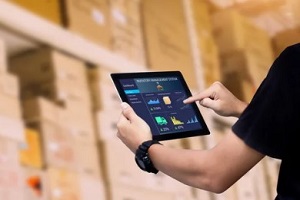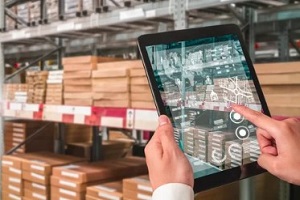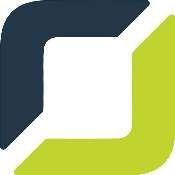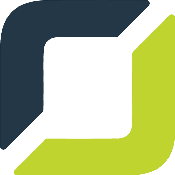Many businesses struggle with inventory inefficiency. According to an analysis of companies, numbers for 65% of nearly 370,000 inventory records across 37 retail stores observed were inaccurate. For efficient operations, there needs to be an understanding of where product is located and what is needed to complete orders.
Inaccurate inventory records create a higher lead time (how long it takes between starting and finishing a process), which then results in a slower response to demand, changes within the market, and stockouts. Therefore, minimizing customer disapproval by having products available when needed is a major goal of retail or manufacturing.
Inventory management software is important for businesses that currently maintain goods in stock or any raw materials on hand. The software gives you access to your entire stock, making it easier to fulfill demand without carrying too much of a particular product.
Inventory management has always been a manual task a person would have to do by hand. This software will help you keep a schedule to complete tasks without the risk of human error. Inventory management software will also track current inventory levels, send out for a reorder, and then relay that information to the proper accounts.
Companies without inventory management are falling behind. Even modern companies sometimes need a boost, and if you feel like you’re not keeping up with current trends. Orases can help you with your current situation, so if you need assistance with inventory management solutions, please reach out.
How Does Inventory Management Software Work?
 Nowadays, inventory management software is mostly cloud-based. By using cloud-based inventory management software, you’re no longer required to have IT staff in-house or run your own servers. Instead, your cloud provider handles your complete cybersecurity plan.
Nowadays, inventory management software is mostly cloud-based. By using cloud-based inventory management software, you’re no longer required to have IT staff in-house or run your own servers. Instead, your cloud provider handles your complete cybersecurity plan.
You can usually purchase cloud-based software directly from the software company as part of a monthly plan. However, choosing a reliable vendor/partner is also very important as they will be managing the software for you. Your rates will depend on the size of the business and can be between $100 to $3,000 monthly in typical scenarios.
What Are The Benefits Of Inventory Management Software?
Great inventory software should be updated in real-time for a comprehensive understanding of inventory in stock, even if that is over a variety of locations. Here are some specific benefits of inventory software:
Inventory Tracking
Whether you’re trying to purchase or sell a specific product, one of the biggest issues is figuring out which major distributor has the item needed. Unfortunately, this can sometimes take hours and yield zero results, so every business, no matter the size or sector, should attempt to provide its customers with reliable stocking information.
Reordering
Inventory management software can also handle reordering, so you never run out of key items. You can also use the software to configure how many items you need to ensure supply without holding “dead stock” or enough inventory to ensure that none of it expires or sits on the shelf collecting dust.
Account For Errors
The software has the capacity to integrate with most accounting systems and comes with its own financing programs. This will safely calculate the updated sales and inventory data directly from the original accounting system and reduce any cause for confusion.
Insight Into Products
You can easily mark sales trends and see which products sell quickly. You can also check what inventory isn’t moving as well and track products that have been recalled. For a boss who isn’t necessarily hands-on, this can offer great insight into your business.
Basic Features to Utilize
 Mobile App
Mobile App
With a mobile app, you can personally review data and make business decisions without pulling out a spreadsheet at the dinner table. A mobile app enables you to monitor inventory fluctuation, scan barcodes, and view customer information from anywhere at any time.
Inventory Catalog
In this day and age, it’s important to be able to view your inventory not just by units but also by variations, such as color, shape, and whatever else pertains to a certain product. Therefore, your software system should let you know how much you have of particular items, such as how many blue medium-sized tank tops are available.
Point of Sale Integration
This integration with your point of sale system will help you automatically track when the product is sold, whether in a physical storefront, on an e-commerce venue, or through any other sales channel.
When the product is scanned or placed in an online cart, the point of sale system communicates automatically with your inventory management system, accounting for that change in real-time. Coupled with automated reordering, this feature allows retailers to ensure they will always have the correct amount of stock and be able to quickly fulfill orders.
Automated Reordering
When an inventory level is running low, it’s important to order more products with enough lead time to avoid running out completely, especially with some of your best-selling items.
Most inventory management systems offer functionality for automatic reordering. For example, your system will create a purchase order to be sent out to your supplier to refresh your stock level if it falls below a certain threshold.
A great inventory management system will also automatically optimize the reordering points and reordering quantities of an item based on the sales data to keep an inventory level at ideal standards. Also, an automated reordering feature can be particularly useful when it is time to stock seasonal products.
Advanced Features To Look For
Manufacturers often face more advanced requirements. Tracking raw materials as well as finished products adds another layer of complexity, but nothing that a good inventory management implementation cannot cover. Some features you may want to consider include:
Forecasting
 Forecasting is a process of analyzing the history of company production and sales data to predict how you can handle future order management needs. A forecasting tool can help with the accuracy of that process. Software with a forecasting feature reviews your data to determine optimal reordering points, recommend when you need new employees, and even shift schedules to meet your goals and continue growing your business.
Forecasting is a process of analyzing the history of company production and sales data to predict how you can handle future order management needs. A forecasting tool can help with the accuracy of that process. Software with a forecasting feature reviews your data to determine optimal reordering points, recommend when you need new employees, and even shift schedules to meet your goals and continue growing your business.
Product Cost Analysis
Product cost analysis tools can track your raw materials and completed products, automatically reordering their components when you have hit minimum levels. Product cost analysis tools can also help predict unknown labor costs and operating expenses, such as when you’re required to purchase new machinery and the costs associated with maintaining said equipment.
Consider an inventory management system that generates a list of materials that will include descriptions of all these expenses.
E-commerce Integration
Sure, you’re comfortable using e-commerce for retail, but more often than not, nowadays, manufacturers are selling directly to the customer. Therefore, inventory software that has e-commerce integration and capabilities is important for modern manufacturers. Even if you don’t sell to customers online now, you could be utilizing it as an alternate sales channel sometime in the future!
Warehouse-Specific Features To Consider
Warehouse inventory management is a more specific subset of larger inventory management software and comes with some key features unique to warehouses. Features to your software include:
Barcoding
 Barcoding is a feature for warehouse management systems to use to track the in and out of products in their storage facilities. For example, a worker can scan an item in as it is received, then scan again when the item has been moved to a specific aisle or bin, and scan the item again as it goes out for shipment.
Barcoding is a feature for warehouse management systems to use to track the in and out of products in their storage facilities. For example, a worker can scan an item in as it is received, then scan again when the item has been moved to a specific aisle or bin, and scan the item again as it goes out for shipment.
The multiple methods of barcoding include serial tracking for pricier items and batch barcoding for large amounts of low-cost items. Also, some barcoding features can be performed by a simple QR reader on your smartphone, reducing the overhead cost of scanner hardware.
RFID
You can track movements without scanner hardware by affixing an RFID tag to the products in your warehouse. RFID tags and readers within the warehouse automatically track items once they are close to one of the readers, eliminating the need for someone to scan products manually.
Inventory Integrations
Warehouse management is the subset of a wider inventory management strategy. Therefore, start by looking for a warehouse inventory management system that is already seamlessly integrated with a larger inventory management software. Vendors should offer this to you as an option.
How To Implement Inventory Management Software
If implementing an inventory management system all on your own seems daunting, you’re not alone. The professional team at Orases has seen every implementation you can imagine; they’ve taken inventory systems from 0 to 100, gutted systems that didn’t fit the client’s needs, taken half-baked solutions and made them work, and so much more.
If you’re trying to better manage your inventory but can’t get the traction you need, reach out to Orases. They’ll guide you through a software management solution guaranteed to save money and meet your requirements.
For over 20 years, companies have chosen Orases to help them with their logistical needs. An Orases software implementation for inventory management will provide you with the modernization you need to succeed.






